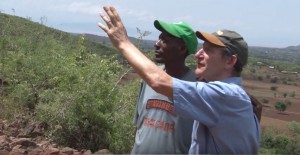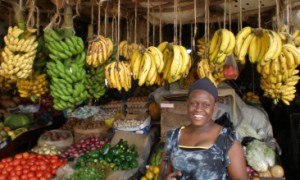“FMNR is really important for climate change. Already, without any dollar, lots of poor farmers, just with a machette, have re-greened their country and provided good food for their children,” notes Tim Costello, Chief Executive Officer at World Vision Australia.
Yearly Archives: 2016
Ethiopia and Malawi success stories on FMNR practices
A Global Wiki of Perennial Crops, Polycultures, and Food Forest Sites
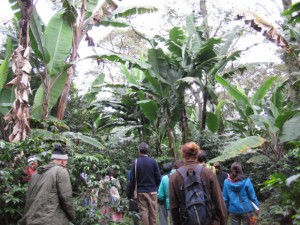 Designing perennial polycultures (guilds) can be a big challenge. Furthermore, resources and information to help design perennial polycultures are few and far between. In order to address this research gap, The Apios Institute, an organization aiming at sharing experiences and information on perennial crop polyculture systems, was formed. The organization through a collaborative network of farmers, gardeners, and researchers, shares inspiration and fills critical knowledge gaps regarding the design and management of these systems. Additionally, it is a place for growers and enthusiasts to share personal experiences, observations, and research.
Designing perennial polycultures (guilds) can be a big challenge. Furthermore, resources and information to help design perennial polycultures are few and far between. In order to address this research gap, The Apios Institute, an organization aiming at sharing experiences and information on perennial crop polyculture systems, was formed. The organization through a collaborative network of farmers, gardeners, and researchers, shares inspiration and fills critical knowledge gaps regarding the design and management of these systems. Additionally, it is a place for growers and enthusiasts to share personal experiences, observations, and research.
Click here to learn more about the initiative
Agriculture is in every SDG
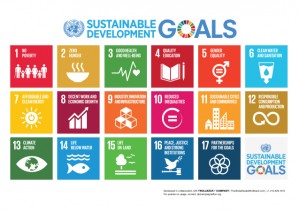 Skimming the eye across the colourful chart of the Sustainable Development Goals (SDGs), it is easy to spot a couple which are intrinsically and directly linked to agriculture, but a closer look reveals that they are in fact all linked to agriculture. A healthy global agricultural sector underpins and supports so many aims of the SDGs that its development will be important for their overall success. As sustainable agriculture is essential for sustainable food systems and livelihoods, here is a breakdown of how agriculture, farming and nutrition fit into the SDG goals:
Skimming the eye across the colourful chart of the Sustainable Development Goals (SDGs), it is easy to spot a couple which are intrinsically and directly linked to agriculture, but a closer look reveals that they are in fact all linked to agriculture. A healthy global agricultural sector underpins and supports so many aims of the SDGs that its development will be important for their overall success. As sustainable agriculture is essential for sustainable food systems and livelihoods, here is a breakdown of how agriculture, farming and nutrition fit into the SDG goals:
- No poverty
- Zero hunger
- Good health and wellbeing
- Quality education
- Gender equality
- Clean water and sanitation
- Affordable and clean energy
- Decent work and economic growth
- Industry innovation and infrustructure
- Reduced inequalities
- Sustainable cities and communities
- Responsible consumption and production
- Climate action
- Life below water
- Life on land
- Peace and justice
- Partnership for the goals
Irish grower group hails benefits of agroforestry
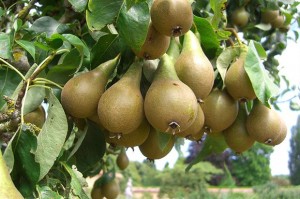 Ireland’s farmers “are now the new foresters”, given that afforestation schemes have led to the establishment of 26,000 private plantations in Ireland since 1980, most owned by farmers.
Ireland’s farmers “are now the new foresters”, given that afforestation schemes have led to the establishment of 26,000 private plantations in Ireland since 1980, most owned by farmers.
Eugene Curan, Government Forestry Inspector, notes that agroforestry provides the landowners with renewable energy sources, offsets carbon emissions from other farming practices, reduces nutrient inputs and run-offs, stabilises drainage, enhances animal welfare, improves animal nutrition, increases biodiversity, enhances the landscape and in some cases increases productivity.
France unveils new agroforestry plans
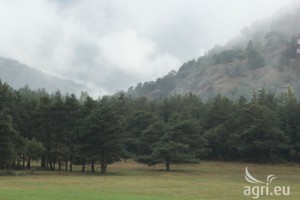 As part of the second National Day of Agroforestry, France unveiled new plans for developing ecologically sustainable forestry practices throughout the country. the plan aims to reduce the environmental impact of forestry and to integrate forest management practices into the transition to agroecology. Additionally, introduction of agroforestry will help contribute to the French 4 per 1000 initiative to increase soil carbon sequestration.
As part of the second National Day of Agroforestry, France unveiled new plans for developing ecologically sustainable forestry practices throughout the country. the plan aims to reduce the environmental impact of forestry and to integrate forest management practices into the transition to agroecology. Additionally, introduction of agroforestry will help contribute to the French 4 per 1000 initiative to increase soil carbon sequestration.
Agroforestry will help increase biodiversity and yields. A study by the French National Institute for Agricultural Research (INRA) revealed that 100 hectare parcel of land managed under agroforestry practices yields the equivalent of 136 hectares of lanad managed under standard principals, providing a potential economic boon for the producers who adopt the practice. Furthermore, trees will help diversify production, limit the loss of nitrates in soil pollution of the water table and improve soil fertility
The plan unveils the government’s specific proposals for promoting it in five broad categories with numerous specific actions under each category. Click here to learn more
AfDB Approves U.S. $76.7-Million for Uganda’s Agriculture Programme
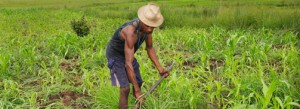 The African Development Bank (AfDB) has approved a US $76.7-million loan to finance phase two of the Uganda Farm Income Enhancement and Forestry Conservation Programme (FIEFOC-2).
The African Development Bank (AfDB) has approved a US $76.7-million loan to finance phase two of the Uganda Farm Income Enhancement and Forestry Conservation Programme (FIEFOC-2).
The programme, which was commended by the AfDB Board on January 20 for its good design and high-impact development objectives, comprises agricultural infrastructure and agribusiness development activities as well as an integrated natural resources management scheme aimed to consolidate and expand key achievements of its predecessor (phase one), which was completed in December 2012.
Designed within the context of Uganda’s National Development Plan and long-term development strategy the Project focuses on improving farm incomes, rural livelihoods, food security and climate resilience. It will also support sustainable natural resources management and agricultural enterprise development.


